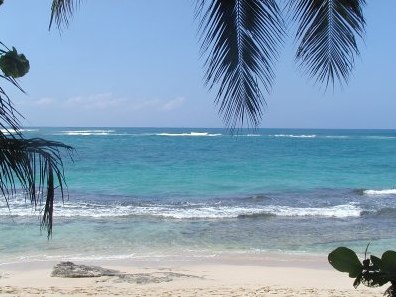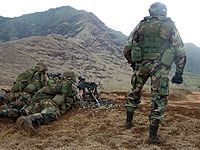Blog
News, updates, finds, stories, and tidbits from staff and community members at KAHEA. Got something to share? Email us at: kahea-alliance@hawaii.rr.com.
Admit it, we were right all along
From Marti:
We have commented on every permit issued and every plan released concerning Papahanaumokuakea because we want to see these public trust resources protected. At every hearing for five years, we have asked the co-managers to assess the cumulative impact of human activities in the Northwestern Hawaiian Islands.
They punted on the monument management plan and fumbled on the science plan, but never stopped issuing precious permits for invasive, extractive (often federally funded) research in this visionary no-take-refuge. Not only that, they issued these permits with exemptions from all environmental review.
We think these exemptions are being issued improperly. This is the only critical habitat for Hawaiian monk seals — you can’t just assume activities there will not affect their fragile, important environment. So we sued.
Now, a year later, we may finally be seeing some action — at least at the State level. Last week, nine permit applications for all kinds of research in the state’s NWHI marine refuge were deferred after the Land Board members conferred with a Deputy Attorney General in executive session. We have no idea what was said. But a special Land Board hearing just for these permit applications was announced for Monday April 19th.
What will the Land Board do? Continue to issue permits that are improperly exempted from all environmental review or finally require that a real, cumulative impact assessment is completed — one that is public and takes into consideration all of the horrible things human exploitation has done to this amazing, irreplaceable marine environment?
Turtle Bay Win!
You’ve probably seen in the papers over the last few days, news of the Supreme Court win for Keep the North Shore Country and Sierra Club Hawaii Chapter. The ruling states that the 1985 EIS developed for a massive proposed development (5 hotels and 1,000 resort condos) on O’ahu’s North Shore, indeed does need an update. In addition to asserting the obvious fact that “things have changed” since the mid-1980s (for most of us, at least), the court acknowledged that the project is too big and too late for the pristine stretch of coastline along Kawela Bay.
Straight from KNSC guys:
Keep the North Shore Country is very pleased the Hawaii Supreme Court, on April 8, 2010, ordered a Supplemental EIS for the Turtle Bay Resort Expansion Plan. We commend the Court for thoroughly reviewing the facts of the case and rendering a strong opinion on the need for an updated environmental review 25 years after the original report was completed in 1985.
We are very appreciative of the enormous support of residents on the North Shore, throughout the state of Hawaii and around the world who passionately cheered us on. Everyone knew that this was the classic case where an SEIS should be required and the Court came down forcefully on the mistakes made by the Honolulu City & County Department of Planning and Permitting and the lower courts for their erroneous interpretation of the law.
Without the numerous donations, large and small, from concerned supporters, we would not have been able to mount this vigorous and ultimately successful campaign. The cost of fighting city hall is staggering, but we were successful because of the stellar work by many people, not the least of whom are our attorneys.
To everyone who believed in us and to everyone who helped make it happen, MAHALO!
See more on their website at www.keepthenorthshorecountry.org

More DraMa-kua...
From Melissa:
The Army plans to continue on with training in Makua Valley even though over 50 species of endangered plants and animals are found in the valley, over 100 of archaeological features are present and there is much resistance from the local community. 
Eight years after agreeing to do so, the Army yesterday completed an environmental examination of military training in Makua Valley by saying it wants to conduct up to 32 combined-arms live-fire exercises and 150 convoy live-fire exercises annually in the 4,190-acre Wai’anae Coast valley.
The “record of decision” by the Army scales back from the 50 combined arms and 200 convoy exercises the Army selected in June as a “preferred” alternative.
“This (Makua) environmental impact statement was a very thorough and publicly open process,” said Maj. Gen. Raymond V. Mason, commander of the Army in Hawai’i and the deciding official. “We’ve reached the best decision that allows our soldiers and small units to train locally and reduces their time away from families, all while ensuring the Army continues to protect the precious environment entrusted to us.”
To reduce the risk of range fires and threats to endangered species and cultural sites, the Army said it would not use tracer ammunition, TOW or Javelin missiles, anti-tank and 2.75-caliber rockets, or illumination rounds.
Additionally, the proposed use of added training lands at Ka’ena Point and what’s known as the “C-Ridge” in Makua are off the table, the Army said.
But Earthjustice attorney David Henkin, who has represented community group Malama Makua in a nearly nine-year lawsuit against the Army, said the level of training proposed still far exceeds anything conducted by the Army before 2004.
Under the terms of a 2001 settlement, live fire with helicopters, mortars, artillery and a company of about 150 soldiers was halted in 2004 because the Army hadn’t completed the agreed-upon environmental impact statement.
“This is a common trick, which is, let’s propose something totally horrendous … and then compromise with something that’s just awful, and people will be thankful, and that’s sort of the (Army’s) approach,” Henkin said of the Army’s record of decision issued yesterday.
Henkin said the Army proposes to do at Makua essentially the same training and use the types of weapons “that time and time again in the past have caused wildfires that have killed endangered species.”
To read the full article click here.





